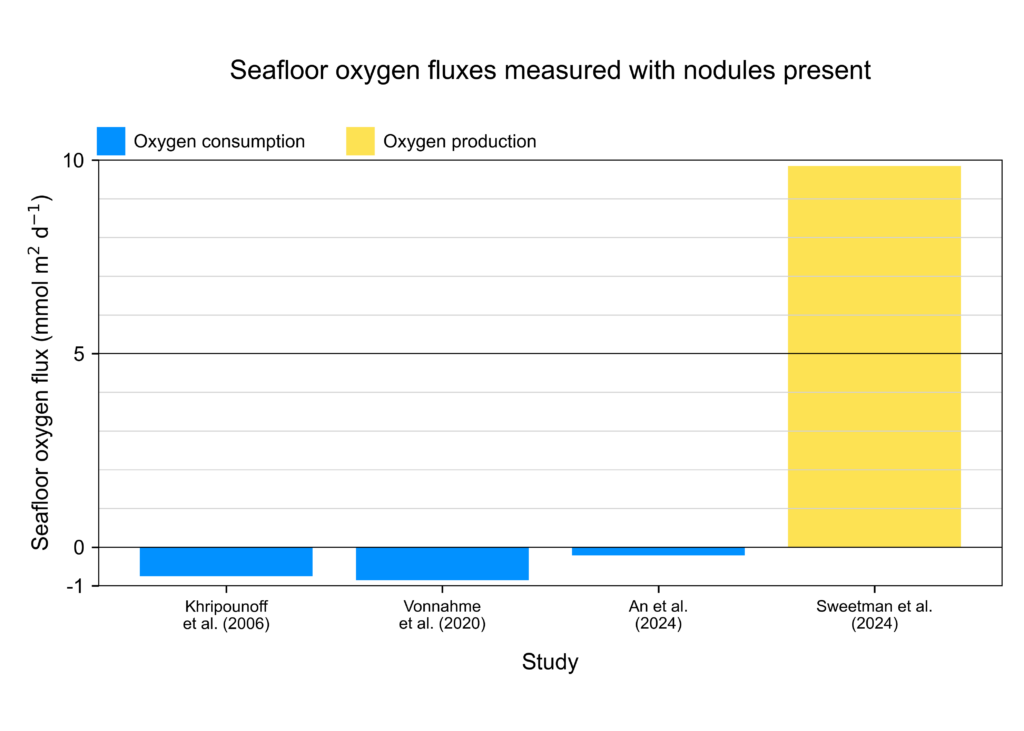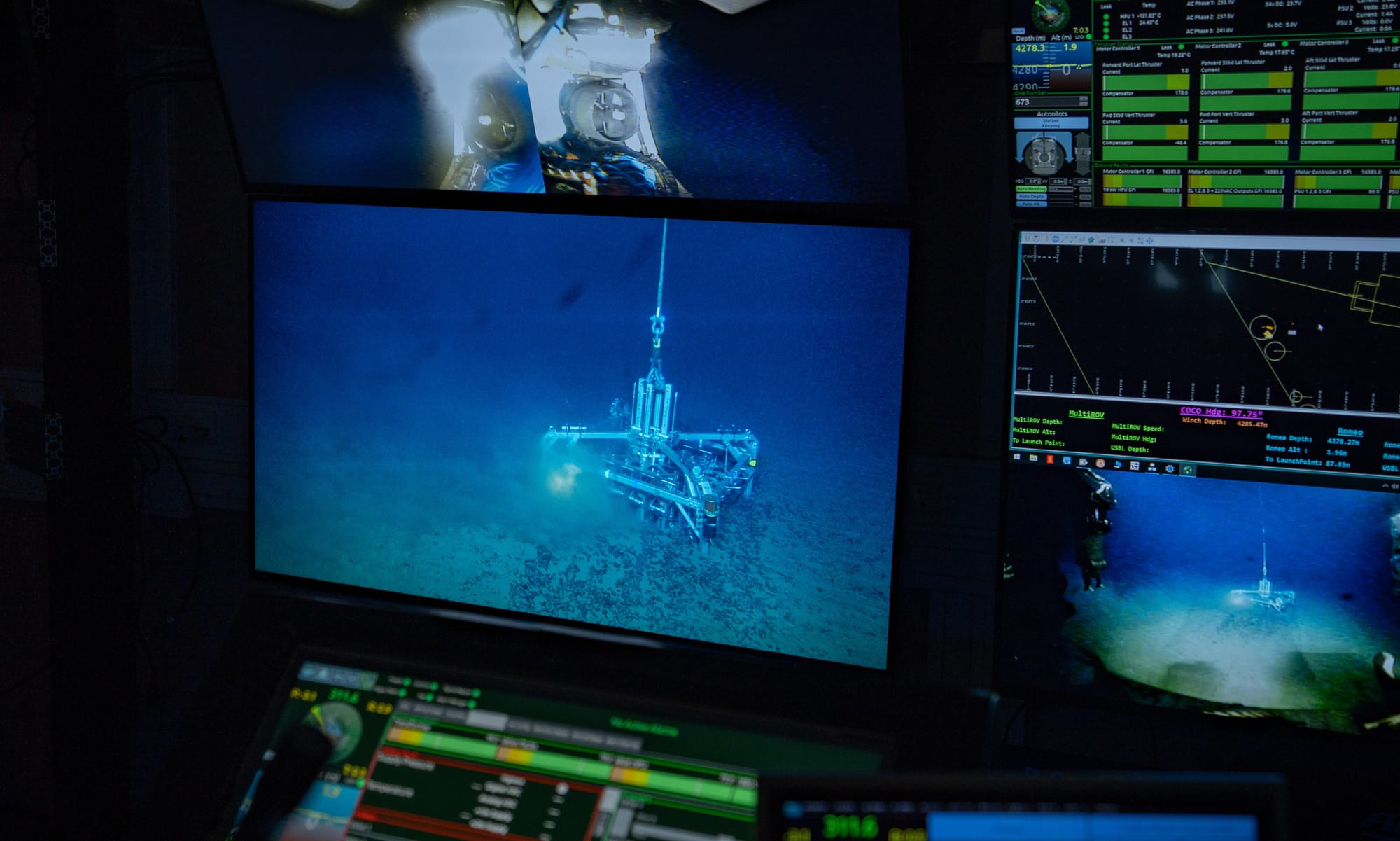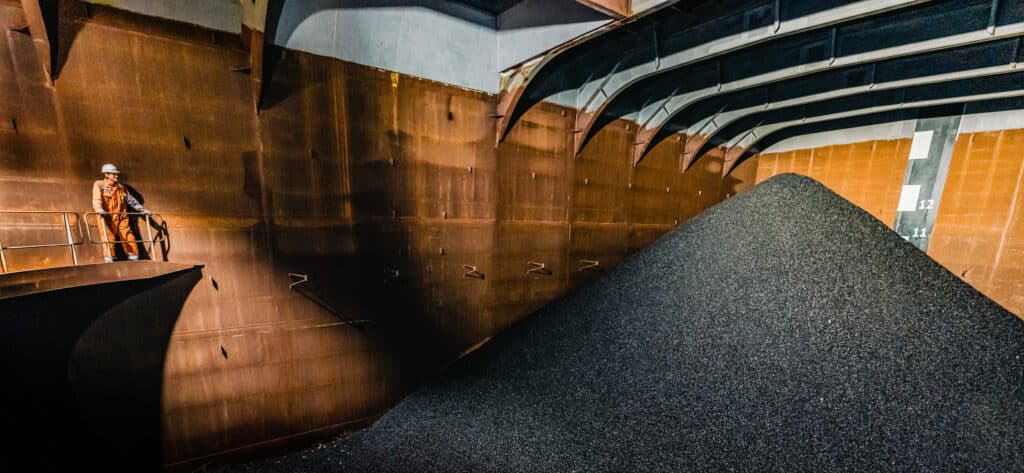For over 12 years, TMC has contributed to society’s understanding of the deep sea by collaborating with leading marine research institutions. As we propose to develop a common heritage resource in international waters, we understand that the burden of proof and the quality of our science must meet the highest standards—our research must be meticulously conducted, rigorously peer-reviewed, and open to public scrutiny.
We are committed to scientific integrity and transparency. All scientists and institutes involved with our deep-sea science program are free to publish their findings in peer-reviewed literature and, over the years, we have welcomed numerous peer-reviewed papers based upon the data they have collected. However, we echo rising concerns from academics and other industry members about a recent paper from Sweetman et al. on the potential for polymetallic nodules to produce oxygen, a phenomenon they refer to as “dark oxygen”, that it does not meet these high scientific standards.
As any good scientist knows, extraordinary claims require extraordinary evidence. Oxygen flux has been measured in multiple nodule fields in the Clarion-Clipperton Zone prior to Sweetman et al.’s paper— all of these measurements published in peer-reviewed literature showed oxygen consumption. A finding that polymetallic nodules can produce oxygen would have the potential to upend our understanding of biological evolution and the oxygenation of Earth. Yet, contrary to the paper’s title, the authors do not present any credible evidence to support dark oxygen production at the abyssal seafloor. We commissioned the work that informed this paper and our team has access to all the raw data and research notes related to these experiments, as detailed in our rebuttal. Key points are summarized below.
Omitting key data
Sweetman et al. claim that benthic chamber experiments in NORI-D support the hypothesis that nodules produce oxygen on the abyssal seafloor, but evidence shows that they omitted key metadata that critically undermines this thesis. Furthermore, the authors publish re-purposed data from a previous study (Cechetto et al. 2023), which Sweetman coauthored, without citation. In essence, Sweetman et al. fail to acknowledge that this previous study used the same data. The authors neglect to discuss the paper’s key contradictory finding that oxygen consumption was measured, rather than production. More importantly, they fail to disclose that the chambers that support their thesis did not actually contain nodules. As Cechetto et al. (2023) note: “No nodules were collected [from the chambers] as they were either not present or in the form of manganese oxide granules”.

Selective reporting of data to support extraordinary claims
In a separate independent critical review, scientists at Adepth identified significant shortcomings in Sweetman et al.’s experimental design, such as the lack of lander device validation with control experiments. However, in examining the raw dataset, we did find evidence that Sweetman et al. conducted control experiments. Sweetman et al. fail to report or discuss the results from experiments to test if oxygen production occurred without nodules. During one benthic lander deployment, they kept chambers above the seafloor without any sediment or nodules inside. Oxygen levels rose in two out of three chambers, directly challenging Sweetman et al.’s claim that the oxygen increased due to the presence of nodules.
Furthermore, Sweetman et al. failed to accurately measure seawater oxygen concentrations in NORI-D. They report much higher and more inconsistent measurements in their experiment chambers than concentrations measured by multiple academic institutes and industry partners have recorded over several years using a variety of sensors. They do not explain this inconsistency.
When considering the omitted information and uncited earlier paper together, Sweetman et al.’s paper’s conclusions are completely unsupported.
Contaminated core experiments
Sweetman et al. use their ex-situ experiments as a foundation to support the hypothesis that nodules on the seafloor produce oxygen. However, the oxygen levels they measured were highly variable; in fact, many were lower than the in-situ background levels in NORI-D. This is likely due to the common occurrence of core samples becoming contaminated with water from the “oxygen minimum zone” during their recovery. During the ex-situ experiments, oxygen levels never exceeded background oxygen concentrations found in NORI-D, indicating that the samples were coming back into equilibrium rather than producing oxygen.
Our critique builds upon and provides the raw data that confirms the data issues that others have highlighted in recent weeks. Indeed, scientists at Adepth have noted issues with:
Hydrogen: While claiming that nodules split seawater into hydrogen and oxygen through electrolysis, Sweetman et al. do not provide any data or discussion on hydrogen observations that would allow someone to validate their claims.
Nodule voltage insufficient for electrolysis: The reported nodule-surface voltage value of 0.95V is insufficient to initiate seawater electrolysis, and the highest value that Sweetman et al. report in their plotted dataset is 0.24V, which suggests an error or selective data reporting. In excluding anomalous data while discussing it in the text, Sweetman et al. mislead readers and misrepresent their findings.
Bursting the Bubble
Sweetman et al.’s extraordinary claims of ‘dark oxygen’ production from seafloor nodules in NORI-D crumble under scrutiny. By selectively reporting data and omitting key evidence, including experiments that show oxygen increases without nodules, they significantly alter how one interprets the results and contradict their claims. We would suggest that rarely has a dataset been published that so emphatically undermines the leading hypothesis. Yet, Sweetman’s supposed findings of ‘dark oxygen’ were sensationalized in media headlines worldwide.
We hope this rebuttal might inject some integrity into the conversation, and aid in correcting the scientific record.
Download a pre-print of the rebuttal here





